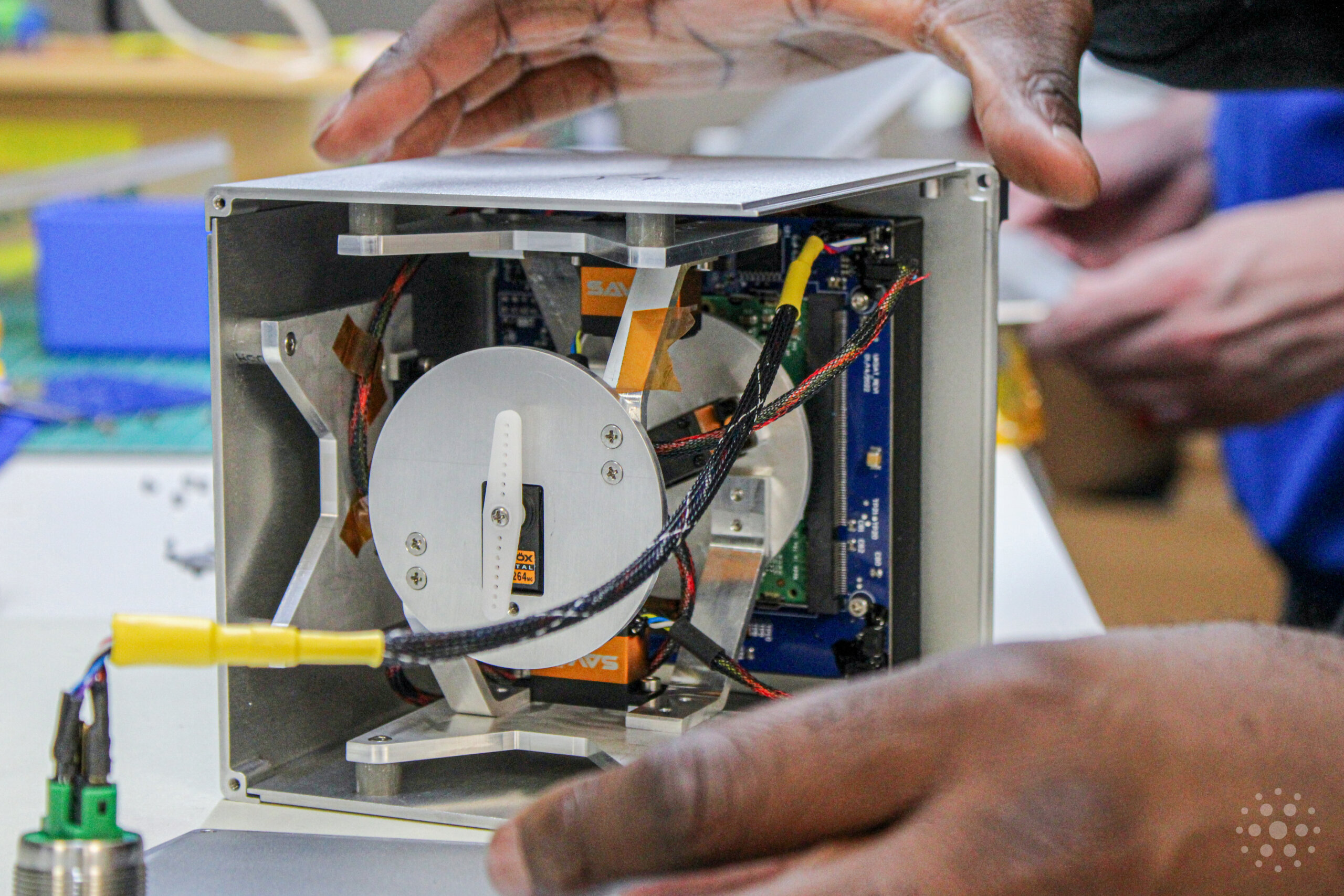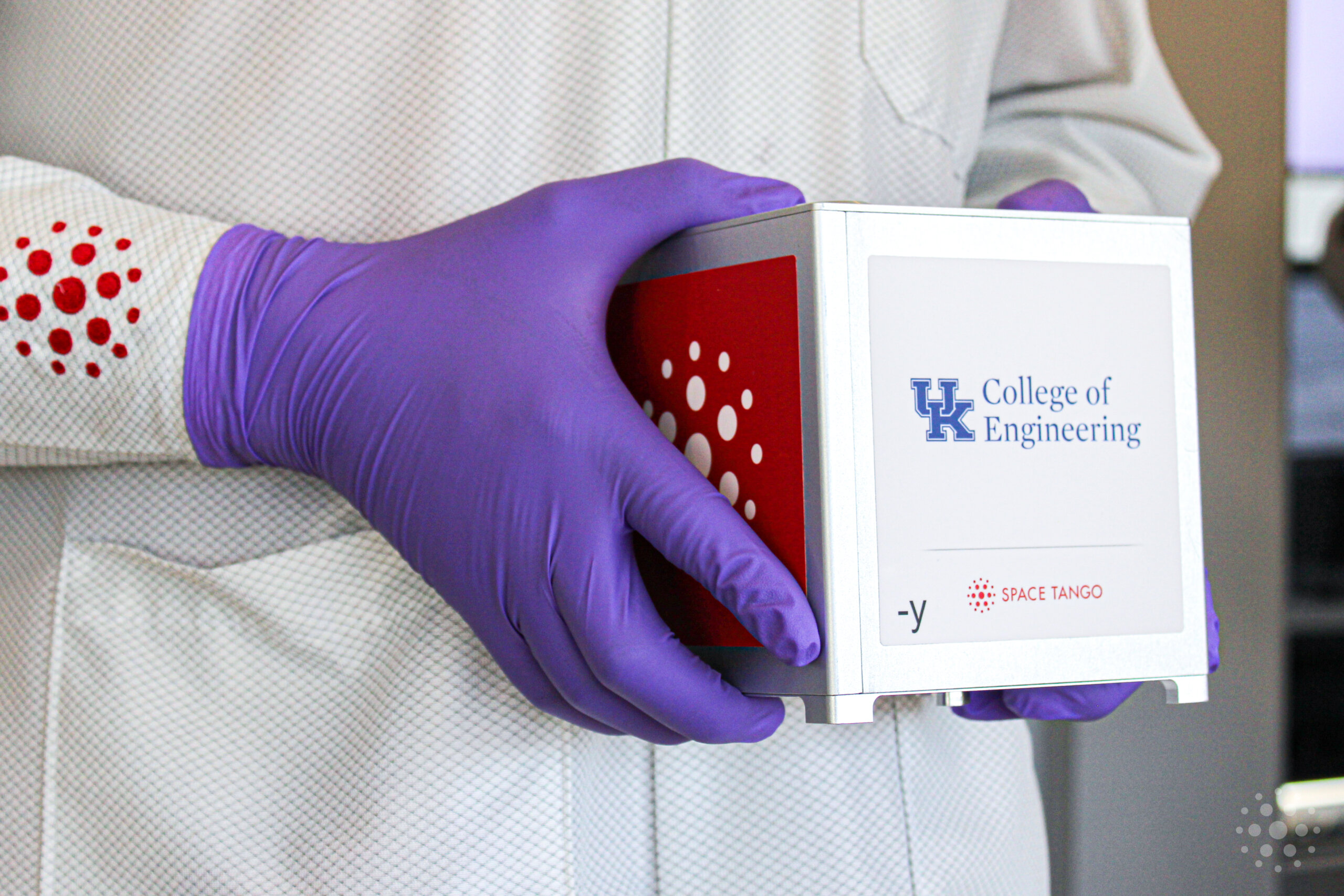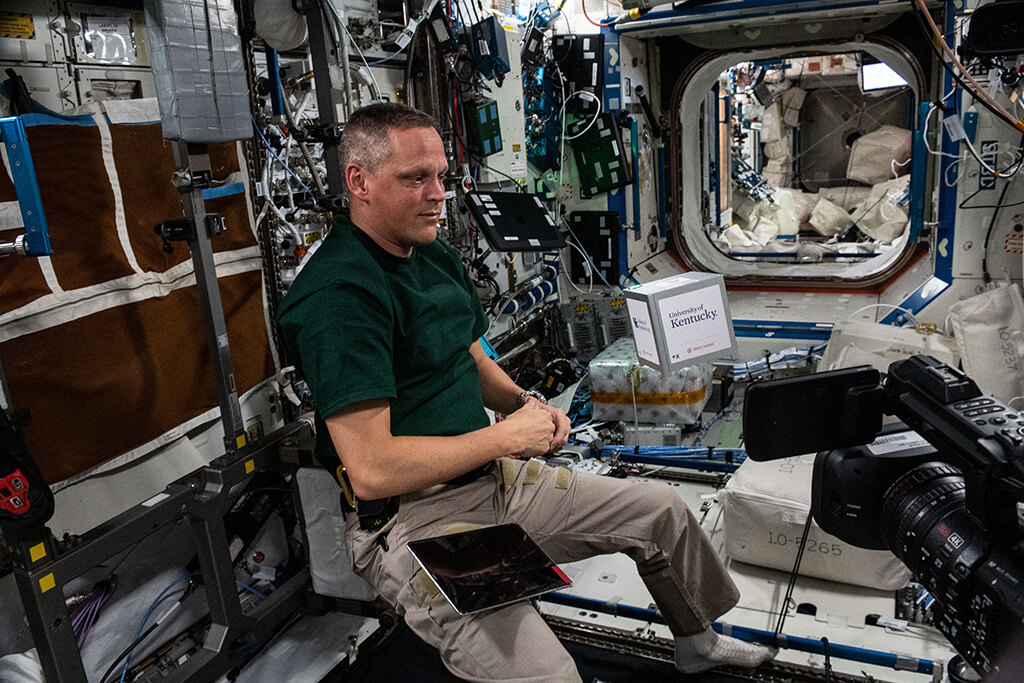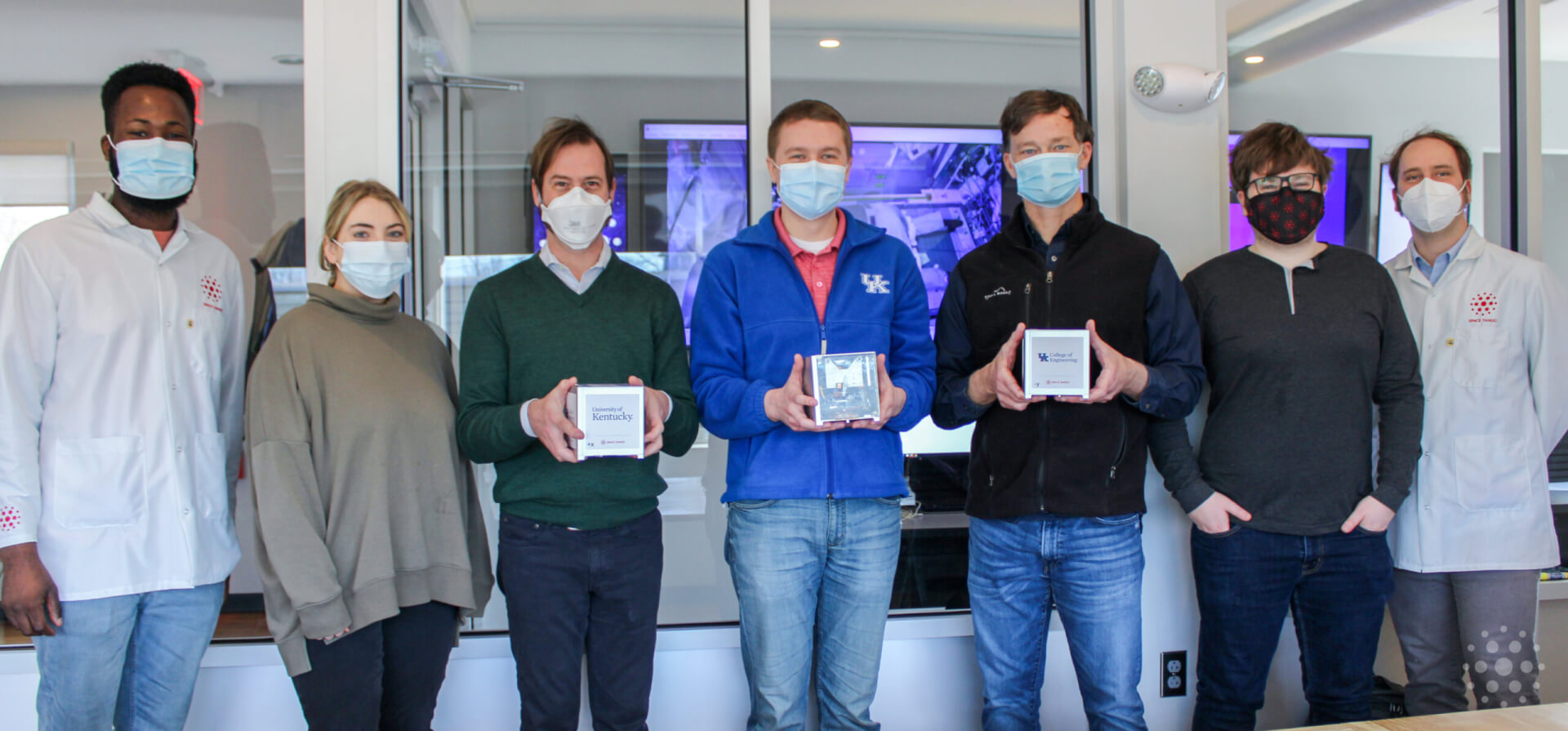
We use cookies to ensure that we give you the best experience on our website. If you continue to use this site we will assume that you are happy with it.
Ok ✕
In partnership with the University of Kentucky, Space Tango deployed two CubeLab satellites in the aisle of the International Space Station (ISS), a first-of-its-kind physical technology demonstration that launched on Northrop Grumman’s 17th Commercial Resupply Services (NG-17). The Space Tango – University of Kentucky CubeLab Satellite Demonstrator (CubeLab Satellite Demonstrator) project, which concluded in June 2022, tested a novel actuation approach for controlling the attitude of small satellites.
Dubbed the ‘dancing’ CubeLabs by the collaboration for its rhythmic movements, this investigation took place in an aisle of the ISS – a unique operations requirement to other CubeLabs that are typically hosted within a TangoLab for the duration of the project.


“The CubeLab Satellite Demonstrator is an exciting display of TangoLabs’ remote capabilities and flexible functionality to support a variety of investigations in microgravity,” said Malik Moville, Space Tango’s mechanical engineering lead for this investigation. “Using the requirements provided by the University of Kentucky team, we designed and developed a CubeLab that can validate subsystems and recharge in the TangoLab both before and after a deployment.”
Oscillating elements within the CubeLab produce internal torques that yield small oscillations of the CubeLab satellite. When properly coordinated, these small oscillations can produce large-angle net rotations. The satellite’s attitude can be precisely controlled by properly adjusting the amplitude and phase of the oscillating elements.


The CubeLab Satellite Demonstrator uses an approach called noncommutative attitude control (NAC). Unlike conventional attitude-control systems, which use flywheels, NAC uses actuators that oscillate instead of spin. Due to the non-commutative nature of attitude, oscillatory actuation can be used to produce net rotation about any axis. The main advantages of oscillatory actuators are that they are easy to scale down for small applications and, unlike spinning flywheels, do not require lubrication and are not subject to friction wear.
Four aisle deployments were completed over the course of three months to validate the performance of the NAC approach and to test different control algorithms. These experiments provided key insights into the feasibility of this new technology.
“One of the main findings of this ISS experiment is that NAC is a viable approach for attitude control of small spacecraft,” said University of Kentucky Associate Professor and Principal Investigator, Dr. Michael Siegler. “Our prior evaluations of this technology were based on mathematical theory, numerical simulations, and one-degree-of-freedom lab experiments. The ISS provided a three-degree-of-freedom testing environment in which we were able to verify our performance predictions and validate the effectiveness of our control algorithms.”
NAC technology has potential applications in next-generation designs of instruments for space exploration such as telescopes, antennas, radiometers, and gravity-wave detectors; particularly those used in fleets or constellations in deep space to create large aperture sensing devices. It may also enhance small satellites used for Earth-based operations such as communications and climate studies.
This investigation consisted of two CubeLab satellites that underwent four 10-minute deployment trials. During each trial, an astronaut deployed a CubeLab satellite in the aisle of the ISS to initiate their NAC protocol for video observation. Throughout deployments, the CubeLab recorded measurements for angular acceleration – the rate at which they pivot on various axes. At the completion of each deployment, the CubeLab was installed in a TangoLab for data download, calibration, and charging.
“The prototypes used in these technology demonstrations can be significantly improved with regard to performance, energy density, and robustness to initial angular velocities and external disturbances,” said Dr. Siegler. “The next steps include ISS testing of an improved NAC prototype system, and eventually an on-orbit technology demonstration.”

This project is supported by NASA (Established Program to Stimulate Competitive Research (EPSCoR) and Kentucky EPSCoR to help advance Kentucky’s expertise in small satellite technology. Space Tango would also like to give special recognition to Software Engineering Intern Cole Gerdemann (University of Kentucky, Class of 2023) for his contributions and demonstrated leadership throughout this project.